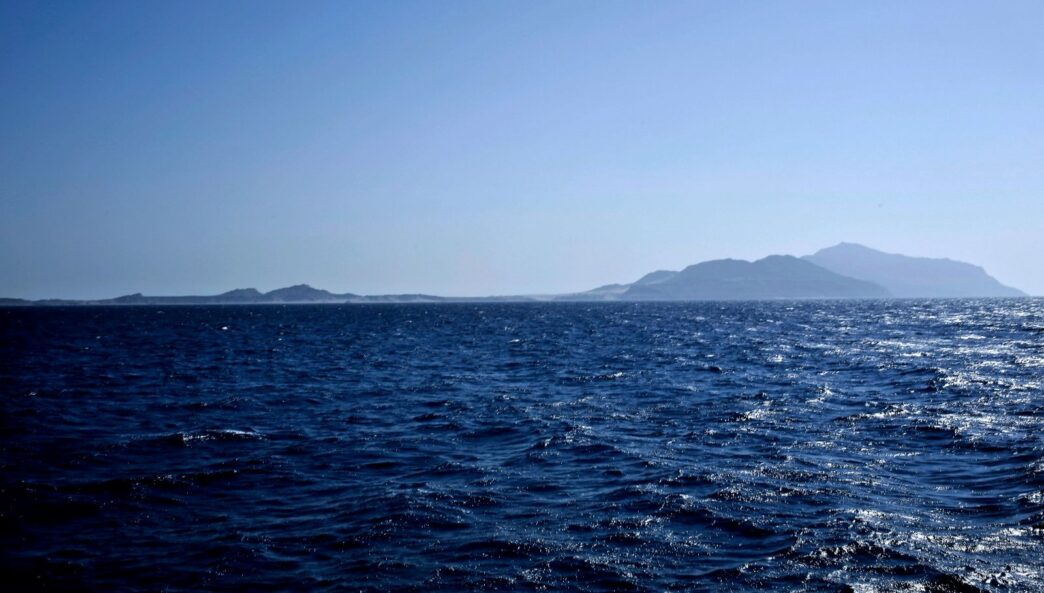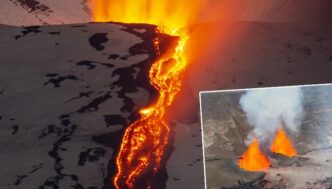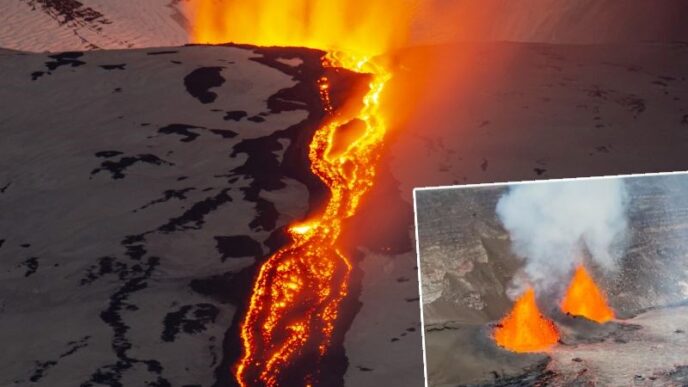Scientists discovered garbage in the deepest place in the Mediterranean, the Oinousses well. Experts recorded plastic bottles, coffee cups, plastic bags, soft drink cans and other garbage on the seabed 5 kilometers below the surface.
According to the news in the Greek newspaper Kathimerini, a study shows that the consequences of human intervention have reached even the most inaccessible parts of our planet. The Oinousses well is located in the western part of the Greek trench, about 60 km from the nearest shore (Pylos), in the southwest of the Peloponnese.
It is known as the largest hot “abyssal” (bottomless) environment in the region, with water temperatures of 13-14 degrees Celsius close to the seabed. The deepest point of the well is 5,112 meters, 18 km long and 4 to 7 km wide, making it the deepest point in the entire Mediterranean.
 DEEPEST DIVE IN 2020 In February 2020, the Caladan Oceanic manned submersible, piloted by Victor Vescovo and carrying Prince Albert II of Monaco, dived into the deepest part of the Oinoussa well. It took the boat 4-5 hours to reach the bottom and cruised for about an hour before starting to rise again. During its stay there, it climbed about 850 meters above the bottom and took videos. This video was delivered by Veskovo to an international scientific team led by German Georg Hanke from the European Research Center. The Greek coordinator was George Papatheodorou, Professor of Geological and Environmental Oceanography at the Department of Geology at the University of Patras. The scientific team analyzed the video using special software to identify, record and analyze the debris encountered by the submarine on the seabed. The results were published a few days ago in an international scientific journal. “This is the second highest concentration of waste found at such a depth (more than 2 km) in the world,” says Professor George Papatheodorou of the University of Patras. “This is the first time that we have found evidence of solid waste pollution in the deepest part of the Mediterranean. The results are disappointing. The garbage concentrations are among the highest ever recorded in the deep sea environment,” Papatheodorou told Kathimerini. RECORDED 167 PIECES OF GARBAGE The submarine’s camera recorded 167 pieces of garbage on the bottom in this short area of 850 meters. When reduced to the area of the well, this number corresponds to a density of 26,175 pieces of garbage per square kilometer. “This is the second highest garbage density detected at such a depth (more than 2 km) anywhere in the world,” Papatheodorou said. “Keep in mind that the highest garbage density at such depths was recorded in two underwater canyons in the South China Sea, with about 55 thousand pieces of garbage per square kilometer,” he added. When looking at the type of garbage recorded, it is seen that the majority (88 percent) is plastic. These are ordinary bags from stores, plastic sacks, coffee cups with lids, plastic bottles, polystyrene cups. The rest are soft drink cans, glass bottles or jars, paper boxes and paper bags. The presence of paper garbage is indicated as an indicator of recent pollution.
DEEPEST DIVE IN 2020 In February 2020, the Caladan Oceanic manned submersible, piloted by Victor Vescovo and carrying Prince Albert II of Monaco, dived into the deepest part of the Oinoussa well. It took the boat 4-5 hours to reach the bottom and cruised for about an hour before starting to rise again. During its stay there, it climbed about 850 meters above the bottom and took videos. This video was delivered by Veskovo to an international scientific team led by German Georg Hanke from the European Research Center. The Greek coordinator was George Papatheodorou, Professor of Geological and Environmental Oceanography at the Department of Geology at the University of Patras. The scientific team analyzed the video using special software to identify, record and analyze the debris encountered by the submarine on the seabed. The results were published a few days ago in an international scientific journal. “This is the second highest concentration of waste found at such a depth (more than 2 km) in the world,” says Professor George Papatheodorou of the University of Patras. “This is the first time that we have found evidence of solid waste pollution in the deepest part of the Mediterranean. The results are disappointing. The garbage concentrations are among the highest ever recorded in the deep sea environment,” Papatheodorou told Kathimerini. RECORDED 167 PIECES OF GARBAGE The submarine’s camera recorded 167 pieces of garbage on the bottom in this short area of 850 meters. When reduced to the area of the well, this number corresponds to a density of 26,175 pieces of garbage per square kilometer. “This is the second highest garbage density detected at such a depth (more than 2 km) anywhere in the world,” Papatheodorou said. “Keep in mind that the highest garbage density at such depths was recorded in two underwater canyons in the South China Sea, with about 55 thousand pieces of garbage per square kilometer,” he added. When looking at the type of garbage recorded, it is seen that the majority (88 percent) is plastic. These are ordinary bags from stores, plastic sacks, coffee cups with lids, plastic bottles, polystyrene cups. The rest are soft drink cans, glass bottles or jars, paper boxes and paper bags. The presence of paper garbage is indicated as an indicator of recent pollution.













